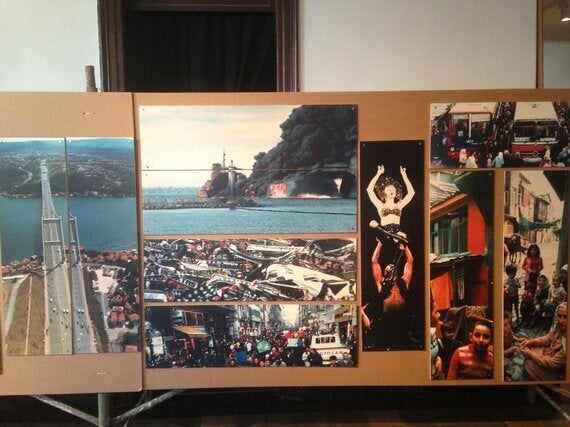
Istanbul is in a constant state of flux. A decade of economic growth is reshaping a skyline that had been untouched for centuries, as bullying new tower blocks and bridges spring up. Below, the change is more abrupt: a fluid mass of constantly changing shops, poorly renovated historic homes and pop-up business in the city's ubiquitous white fibreglass multi-purpose kiosks.
What this former capital of three empires lacks is a museum dedicated to the city itself. Amid all of this change, little is being done to record a past that spans 8,500 years.
"People are too focused on the present. Their conception of history is something that can be consumed quickly," said Vangelis Kechriotis, a professor of history at Bogazici University and the assistant director of Istanbul's History Foundation.
Many of the world's greatest cities have a museum dedicated to telling their urban story. These institutions help frame an urban context not only for visitors but, more importantly, for the city's dwellers themselves.
The History Foundation, established in 1994, had planned to develop a museum dedicated to Istanbul's history back in the 1990s. It was to use as its kernel its 1996 "World City Istanbul Exhibition," organised with Unesco's Habitat II Human Settlements Conference in the city. However, the museum project became bogged down in red tape, and the Foundation was eventually deprived of the space it had been promised at the regal Ottoman National Mint, or Darphane-i Amire.
Now the idea of a city museum is being mooted again. Last summer, as anti-government protests raged over plans to raze the central Gezi Park and build a shopping mall, Prime Minister Recep Tayyip Erdogan modified his plans and instead promised the building he wanted to erect at Gezi would house a museum. That still failed to mollify protesters and Erdogan's proposal never gained traction.
The History Foundation took the renewed talk of a city museum to heart. It decided to restage its 1996 exhibition at a former Greek primary school, disused as the city's native Greek population dwindled to a mere 3,000 inhabitants.
"Again and New: World City Istanbul," which runs through this weekend, is an exhibition of an exhibition. The dioramas and information panels, which had been meticulously crated up and stored at the Darphane, are back on display, describing key moments in Istanbul's long history. The show looks rough: Colour panels made with now-obsolete printers are hoisted onto cardboard held up by painters' scaffolding. A kind of time capsule, it exhibits how Istanbul saw itself in 1996: crowded, cheerful, decadent, unmoored from its own past.
Some may argue that a city museum in Istanbul would be redundant. Istanbul is itself a living museum, they might say as they trip over unmarked relics and ruins that literally dot the streets here. But this lets people off the hook for the wholesale destruction Istanbul has faced on a near constant basis since, well, always. Istanbullus like to eulogise their city but don't seem particularly interested in preserving it.
But the real stumbling block may be that Istanbul's history is just too complicated. Bloodshed has often accompanied each new epoch, and most Turks are either unaware or have yet to come to terms with the country's darkest episodes. Even the progressive-minded "World City Istanbul" skirts the most painful episodes, such as the mass killings and deportation of Christians during World War One or the looting of thousands of churches and businesses owned by minorities during a single night of violence in September 1955.
Museums are inherently political, and it is likely that a city museum project initiated by the state would whitewash over the bloodstains. Instead, the focus has been on the a Disneyland-style retelling of heroic conquerors and intercommunal harmony seen at popular Istanbul venues like Miniaturk and Panorama Istanbul.
A museum needs to develop gradually over time as each generation imprints its own identity onto the city. And if it had been built in 1996, it would be a different experience now. Kechriotis said tackling this now, amid all of the sensitivities of space in Istanbul, would take guts. "Turkish society's perception about its past is changing so fast. I'm not sure someone would take the risk to do it now."